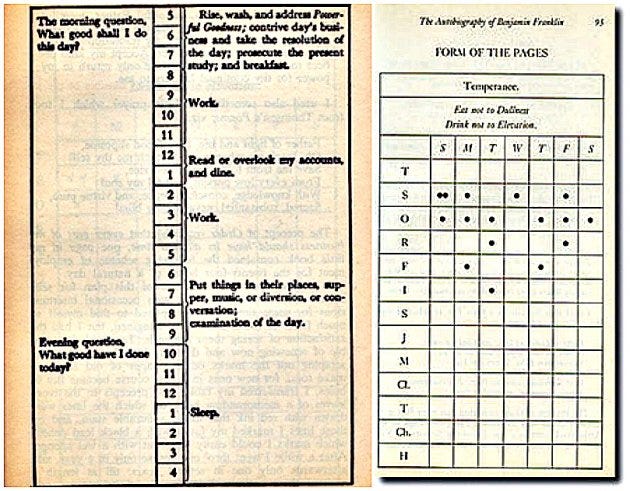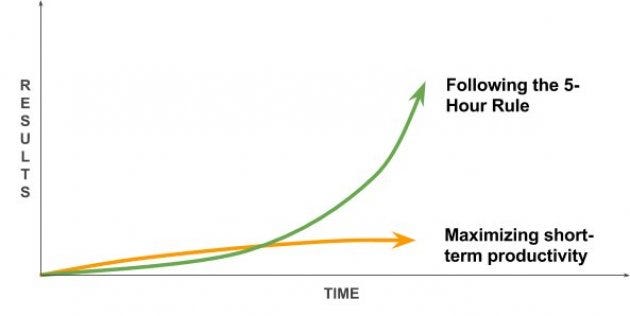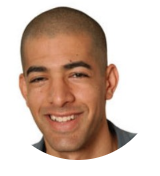Why Constant Learners All Embrace the 5-Hour Rule
Benjamin Franklin did this 1 hour a day, 5 hours a week. Why you should do it too.
At the age of 10, Benjamin Franklin left formal schooling to become an apprentice to his father. As a teenager, he showed no particular talent or aptitude aside from his love of books.
When he died a little over half a century later, he was America’s most respected statesman, its most famous inventor, a prolific author, and a successful entrepreneur.
What happened between these two points to cause such a meteoric rise?
The answer to this question is a success strategy that we can all use, and increasingly must use for our career, business and life.
The five-hour rule
Throughout Ben Franklin’s adult life, he consistently invested roughly an hour a day in deliberate learning. I call this Franklin’s five-hour rule: one hour a day on every weekday.
Franklin’s learning time consisted of:
- Waking up early to read and write
- Setting personal-growth goals (i.e., virtues list) and tracking the results
- Creating a club for “like-minded aspiring artisans and tradesmen who hoped to improve themselves while they improved their community”
- Turning his ideas into experiments
- Having morning and evening reflection questions

Every time that Franklin took time out of his busy day to follow his five-hour rule and spend at least an hour learning, he accomplished less on that day. However, in the long run, it was arguably the best investment of his time he could have made.

Franklin’s five-hour rule reflects the very simple idea that, over time, the smartest and most successful people are the ones who are constant and deliberate learners. And at the core of their learning is reading:
- Warren Buffett spends five to six hours per day reading five newspapers and 500 pages of corporate reports.
- Bill Gates reads 50 books per year.
- Mark Zuckerberg reads at least one book every two weeks.
- Elon Musk grew up reading two books a day, according to his brother.
- Oprah Winfrey credits books with much of her success: “Books were my pass to personal freedom.”
- Arthur Blank, co-founder of Home Depot, reads two hours a day.
- Dan Gilbert, self-made billionaire and owner of the Cleveland Cavaliers, reads one to two hours a day.
So what would it look like to make the five-hour rule part of our lifestyle?
First, make time for learning
To find out, we need look no further than chess grandmaster and world-champion martial artist Josh Waitzkin. Instead of squeezing his days for the maximum productivity, he’s actually done the opposite. Waitzkin, who also authored The Art of Learning, purposely creates slack in his day so he has“empty space” for learning, creativity, and doing things at a higher quality.Here’s his explanation of this approach from a recent Tim Ferriss podcast episode:
“I have built a life around having empty space for the development of my ideas for the creative process. And for the cultivation of a physiological state which is receptive enough to tune in very, very deeply to people I work with … In the creative process, it’s so easy to drive for efficiency and take for granted the really subtle internal work that it takes to play on that razor’s edge.”
Adding slack to our day allows us to:
- 1. Plan out the learning. This allows us to think carefully about what we want to learn. We shouldn’t just have goals for what we want to accomplish. We should also have goals for what we want to learn.
- 2. Deliberately practice. Rather than doing things automatically and not improving, we can apply the proven principles of deliberate practice so we keep improving. This means doing things like taking time to get honest feedback on our work and practicing specific skills we want to improve.
- 3. Ruminate. This helps us get more perspective on our lessons learned and assimilate new ideas. It can also help us develop slow hunches in order to have creative breakthroughs. Walking is a great way to process these insights, as shown by many greats who were or are walking fanatics, from Beethoven and Charles Darwin to Steve Jobs and Jack Dorsey. Another powerful way is through conversation partners.
- 5. Set aside time just for learning. This includes activities like reading, having conversations, participating in a mastermind, taking classes, observing others, etc.
- 6. Solve problems as they arise. When most people experience problems during the day, they sweep them under the rug so that they can continue their to-do list. Having slack creates the space to address small problems before they turn into big problems.
- 7. Do small experiments with big potential payoffs. Whether or not an experiment works, it’s an opportunity to learn and test your ideas.
Next, read the best books in the world
Want to read the most-recommended books by top leaders like Bill Gates, Mark Zuckerberg, Sheryl Sandberg, and Elon Musk?
My team and I went through 460+ book recommendations of top CEOs and entrepreneurs, crunched the data, and found the six most recommended books.
To help you follow the 5-hour rule, you can access the most recommended books here for free.
Finally, read faster
The final problem now is that it could take you years of focused reading just to get through these hundreds of book recommendations.
There is a solution though.
Imagine if you could read one book a day?
And…get the best ideas from each book immediately?
This is possible.
The reality is that the value of a book is not evenly distributed. It is likely that you will get 80% of the true value from only a few pages.
That often means that a lot of reading time is wasted.
This is where book summaries come in.
But, as much as I love most book summaries out there, they typically have two problems:
- They just aren’t designed to help you apply your knowledge into real life situations, so that you can get results.
- They don’t show how the books’ ideas connects to other books.
So, after reading thousands of books, and talking with the best learning experts in the world, I developed my own unique learning system that is essentially book summaries on steroids.
Here’s how I developed this learning system, step-by-step:
- I pick the best books in the world to read. (I pull from the great thinkers, leaders, and entrepreneurs of all time — from self-made billionaires Charlie Munger, Warren Buffett, and Ray Dalio — to leading academics and thinkers like Nassim Taleb and Nobel Laureate Daniel Kahneman.)
- Then, I take detailed notes of the best ideas
- Next, I connect those ideas to all of the other best ideas I’ve learned
- Finally, I create simple exercises to help apply these ideas.
In other words, instead of just summarizing books, I extract their most valuable gems, put them in context, and make them actionable.
That is how you can read one book in one day!
If you want to read the consume the best ideas in the world, let me save you time.

| - | I teach people to learn HOW to learn |
| - | Bootstrapped million dollar social enterprises |
| - | Best-selling author |
| - | Contributor: Time, Fortune, and Harvard Business Review |
| - | Alum: Ernst & Young Entrepreneur Of The Year, Inc. 30 under 30, Businessweek 25 under 25 |
| - | Creator of the largest learning community in the world |
| - | Have read thousands of books |
Read more about me…



